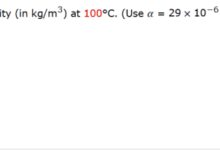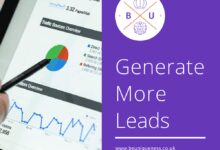Leads Density: 7 Shocking Truths You Must Know in 2024
Ever wondered why some marketing campaigns convert like crazy while others flop? The secret might not be in the content—but in the leads density. This hidden metric could be the game-changer you’ve overlooked.
What Is Leads Density? A Clear Definition
Leads density is a performance metric that measures the concentration of qualified leads within a specific data set, time frame, or marketing channel. Unlike simple lead volume, leads density evaluates quality, relevance, and conversion potential per unit of input—be it per campaign, per thousand impressions, or per sales rep.
Breaking Down the Core Concept
At its heart, leads density isn’t just about counting how many people filled out a form. It’s about understanding how many of those leads are actually worth pursuing. For example, if a campaign generates 1,000 leads but only 10 convert, the leads density is low. Conversely, a campaign with 200 leads and 25 conversions has a high leads density, signaling better targeting and efficiency.
- Leads density = (Number of qualified leads) / (Total marketing effort or input)
- Input can be ad spend, impressions, email sends, or time invested
- Focuses on quality over quantity
Why Leads Density Matters More Than Raw Lead Count
Many businesses celebrate high lead volumes without realizing that most are unqualified. This creates inefficiencies in sales pipelines, wasted resources, and poor ROI. Leads density shifts the focus from vanity metrics to actionable insights. According to HubSpot’s 2023 State of Sales Report, companies that prioritize lead quality over quantity see 3.5x higher conversion rates.
“It’s not the number of leads that matters—it’s how many of them actually want to buy.” — Maria Thompson, Chief Revenue Officer at GrowthLabs
How Leads Density Impacts Marketing ROI
Marketing budgets are finite. The goal is to maximize return on every dollar spent. Leads density directly influences ROI by revealing which channels, campaigns, or segments deliver the most valuable prospects.
Connecting Leads Density to Cost Per Acquisition (CPA)
High leads density typically correlates with lower CPA. When a campaign produces a high concentration of qualified leads, fewer resources are wasted on unqualified follow-ups. For instance, a LinkedIn ad campaign with high leads density might generate fewer leads than a Facebook campaign, but those leads are more likely to convert, reducing overall acquisition costs.
- Low leads density → higher CPA due to wasted effort
- High leads density → lower CPA, faster sales cycles
- Use leads density to reallocate budgets to top-performing channels
Case Study: SaaS Company Boosts ROI by 140% Using Leads Density
A mid-sized SaaS company analyzed their Q2 campaigns and found that while their Google Ads generated 5,000 leads, only 4% converted. Their webinar series, however, produced just 800 leads but had a 22% conversion rate. By calculating leads density, they discovered the webinar had 5.5x higher density. They shifted 60% of their ad budget to content-driven webinars, resulting in a 140% increase in ROI within three months.
Calculating Leads Density: The Formula and Metrics
To leverage leads density, you need a clear formula and consistent data tracking. The calculation can be adapted based on your business model, but the core principle remains the same: quality per unit of effort.
Basic Leads Density Formula
The simplest way to calculate leads density is:
Leads Density = Number of Marketing Qualified Leads (MQLs) / Total Marketing Input
Where “Total Marketing Input” can be defined as:
- Ad spend (e.g., $10,000)
- Impressions (e.g., 1 million)
- Emails sent (e.g., 50,000)
- Hours of sales outreach
For example: A campaign generates 200 MQLs from $20,000 in ad spend. Leads density = 200 / 20,000 = 0.01 MQLs per dollar.
Advanced Metrics to Pair With Leads Density
To get a fuller picture, combine leads density with other KPIs:
- Conversion Rate: What percentage of leads become customers?
- Lead-to-Customer Ratio: How many leads are needed to close one deal?
- Average Deal Size: Are high-density leads also high-value?
- Sales Cycle Length: Do high-density leads move faster through the funnel?
Tools like Salesforce and HubSpot can automate these calculations and provide dashboards for real-time monitoring.
Leads Density vs. Lead Volume: The Critical Difference
Many marketers confuse lead volume with success. But high volume doesn’t guarantee results. Leads density exposes the truth behind the numbers.
When High Volume Leads to Low Results
Imagine two campaigns:
- Campaign A: 10,000 leads, $50,000 spend, 200 conversions (2% conversion rate)
- Campaign B: 1,500 leads, $10,000 spend, 150 conversions (10% conversion rate)
At first glance, Campaign A seems better. But when you calculate leads density:
- Campaign A: 200 MQLs / $50,000 = 0.004 MQLs per dollar
- Campaign B: 150 MQLs / $10,000 = 0.015 MQLs per dollar
Campaign B has nearly 4x higher leads density. It’s more efficient, cost-effective, and scalable.
Why Sales Teams Prefer High Leads Density
Sales reps spend less time chasing dead ends when leads density is high. A study by Cornerstone OnDemand found that sales teams using high-density leads reported 38% higher job satisfaction and 27% shorter sales cycles.
“We used to get 500 leads a week, but only 5 were good. Now we get 100, but 25 are ready to buy. That’s a game-changer.” — Jordan Lee, Sales Manager at TechFlow
Factors That Influence Leads Density
Several internal and external factors affect leads density. Understanding them allows you to optimize campaigns proactively.
Targeting Accuracy and Audience Segmentation
Precise targeting is the #1 driver of high leads density. The more accurately you define your ideal customer profile (ICP), the higher the concentration of qualified leads. Use firmographic, behavioral, and psychographic data to refine segments.
- Narrowing audience criteria on LinkedIn Ads increased leads density by 62% for one B2B firm
- Dynamic landing pages based on visitor intent improved density by 44%
Content Relevance and Offer Quality
The content or offer you present directly impacts who responds. A generic eBook might attract many but convert few. A niche whitepaper solving a specific pain point attracts fewer but higher-quality leads.
- High-value offers (e.g., free trials, consultations) increase leads density
- Content aligned with buyer journey stages performs better
- Interactive content (quizzes, calculators) boosts engagement and qualification
Channel Selection and Platform Fit
Not all channels are equal. LinkedIn typically delivers higher leads density for B2B than Instagram. Email campaigns to segmented lists outperform cold outreach. Choose platforms where your audience actively seeks solutions.
- B2B companies report 3x higher leads density on LinkedIn vs. Facebook
- Organic search leads have 2.8x higher density than social media leads
- Email nurtures increase density by warming up leads before sales contact
How to Improve Leads Density in Your Campaigns
Improving leads density isn’t about generating more leads—it’s about attracting the right ones. Here’s how to do it systematically.
Refine Your Ideal Customer Profile (ICP)
Start with data. Analyze your best customers: industry, company size, job title, pain points, and buying behavior. Use this to build a detailed ICP. Then, align all campaigns to this profile.
- Conduct win/loss interviews to understand what makes a good fit
- Use CRM data to identify common traits among high-LTV customers
- Update ICP quarterly based on market changes
Implement Lead Scoring and Qualification Workflows
Not all leads are equal. Use lead scoring to rank leads based on engagement, demographics, and behavior. Only pass high-scoring leads to sales.
- Assign points for actions: visiting pricing page (+10), downloading case study (+15), attending webinar (+25)
- Set thresholds: e.g., leads with 50+ points are sales-ready
- Integrate with marketing automation tools like Marketo or Pardot
Optimize Landing Pages for Quality Over Quantity
A landing page that’s too aggressive with CTAs may boost volume but hurt quality. Instead, focus on clarity, value proposition, and qualification questions.
- Add a short pre-qualification form: “What’s your biggest challenge?”
- Use progressive profiling to gather info over time
- A/B test headlines and CTAs for conversion quality, not just clicks
Leads Density in Different Industries: B2B vs. B2C
The application of leads density varies by industry. B2B and B2C models have different sales cycles, lead definitions, and conversion metrics.
B2B: High Value, Long Cycles, Precision Needed
In B2B, leads density is critical due to longer sales cycles and higher customer lifetime value. A single deal can be worth tens of thousands. Therefore, every lead must be carefully qualified.
- Leads density measured per sales rep or per account-based marketing (ABM) campaign
- Focus on engagement depth: time on site, content downloads, demo requests
- ABM strategies increase leads density by targeting decision-makers directly
“In B2B, one high-density lead is worth 100 unqualified ones.” — Alex Rivera, VP of Growth at EnterpriseReach
B2C: Volume with Filters for Scalability
B2C often relies on volume, but leads density still matters. The goal is to filter out tire-kickers early. For example, an e-commerce brand might measure leads density per 1,000 ad impressions or per email subscriber.
- Use behavioral triggers: cart abandoners have higher density than general sign-ups
- Offer tiered lead magnets: free guide (low density) vs. free trial (high density)
- Leverage AI to predict purchase intent and score leads
Tools and Technologies to Measure Leads Density
You can’t improve what you don’t measure. Several tools help track, analyze, and optimize leads density across channels.
CRM and Marketing Automation Platforms
CRMs like Salesforce, HubSpot, and Zoho CRM allow you to tag, score, and track leads from source to sale. They provide dashboards to calculate leads density by campaign, channel, or rep.
- Custom reports to show MQLs per dollar spent
- Integration with ad platforms for closed-loop analytics
- Automated lead routing based on density scores
Analytics and Attribution Tools
Tools like Google Analytics 4, Hotjar, and Ruler Analytics help attribute leads to specific touchpoints. Multi-touch attribution models reveal which channels contribute most to high-density leads.
- Track user behavior to identify high-intent visitors
- Map customer journeys to optimize for quality touchpoints
- Measure assisted conversions, not just last-click
AI-Powered Lead Scoring and Predictive Analytics
AI tools like InsideSales, People.ai, and Gong analyze historical data to predict which leads are most likely to convert. This boosts leads density by prioritizing high-potential prospects.
- Predictive scoring reduces manual effort
- Real-time alerts for high-density lead activity
- Continuous learning improves accuracy over time
Common Mistakes That Kill Leads Density
Even well-intentioned campaigns can suffer from low leads density due to avoidable errors. Recognizing these pitfalls is the first step to fixing them.
Over-Reliance on Lead Magnets with Low Barriers
Offering a free eBook with no qualification questions attracts everyone, including bots and irrelevant audiences. This inflates lead volume but destroys leads density.
- Solution: Add qualifying questions to forms
- Use gated content that requires professional email addresses
- Test different offer types to find the optimal balance
Poor Follow-Up Sequences and Nurturing
A lead that isn’t nurtured loses value over time. Without timely, relevant communication, even high-potential leads go cold, reducing effective leads density.
- Solution: Automate email sequences based on behavior
- Use dynamic content to personalize messages
- Set up SMS or chatbot follow-ups for faster engagement
Ignoring Data Hygiene and Lead Decay
Leads decay over time. Studies show that 70% of B2B leads never convert if not contacted within 24 hours. Poor data management leads to stale leads and false density calculations.
- Regularly clean your database
- Re-engage inactive leads with reactivation campaigns
- Track lead aging and deprioritize old leads
Future Trends in Leads Density Optimization
As AI, automation, and data analytics evolve, so will the way we measure and improve leads density.
AI-Driven Real-Time Lead Qualification
Soon, AI will qualify leads the moment they interact with your site. Chatbots will assess intent, voice analysis will detect buying signals, and real-time scoring will route only the densest leads to sales.
- Instant qualification reduces lag time
- AI can detect subtle behavioral cues humans miss
- Integration with CRM for seamless handoff
Privacy-First Lead Density Models
With cookie deprecation and GDPR, tracking is harder. Future leads density models will rely more on first-party data, zero-party data, and consent-based engagement.
- Focus on value exchange: give to get
- Use preference centers to gather intent data
- Build trust to increase willingness to share
Hyper-Personalization at Scale
Mass personalization will allow marketers to deliver tailored experiences that attract only relevant prospects, naturally increasing leads density.
- Dynamically adjust offers based on visitor profile
- Use AI to generate personalized content
- Deliver context-aware CTAs
What is leads density?
Leads density is a metric that measures the concentration of qualified, convertible leads within a given marketing effort or data set. It emphasizes quality over quantity by evaluating how many leads are truly sales-ready per unit of input, such as ad spend or impressions.
How do you calculate leads density?
Leads density is calculated by dividing the number of marketing qualified leads (MQLs) by the total marketing input (e.g., ad spend, impressions, emails sent). For example: 200 MQLs / $20,000 ad spend = 0.01 MQLs per dollar.
Why is leads density more important than lead volume?
Lead volume can be misleading—if most leads are unqualified, high volume leads to wasted effort and poor ROI. Leads density focuses on quality, ensuring that marketing resources are spent on prospects most likely to convert.
Which tools help measure leads density?
CRM platforms like Salesforce and HubSpot, marketing automation tools like Marketo, and analytics platforms like Google Analytics and Ruler Analytics help track and calculate leads density. AI-powered tools like Gong and People.ai enhance accuracy with predictive scoring.
Can leads density be improved in B2C marketing?
Yes. In B2C, leads density can be improved by using behavioral targeting, tiered lead magnets, and AI-driven intent prediction. Focusing on high-intent actions like cart abandonment or free trial sign-ups increases the concentration of valuable leads.
Leads density is not just another metric—it’s a strategic lens for evaluating marketing effectiveness. By shifting focus from raw lead counts to the quality and concentration of prospects, businesses can optimize spending, improve sales efficiency, and boost ROI. Whether in B2B or B2C, the principles remain the same: attract fewer, but better, leads. As marketing becomes more data-driven and privacy-conscious, leads density will only grow in importance. Start measuring it today to stay ahead of the curve.
Further Reading:



